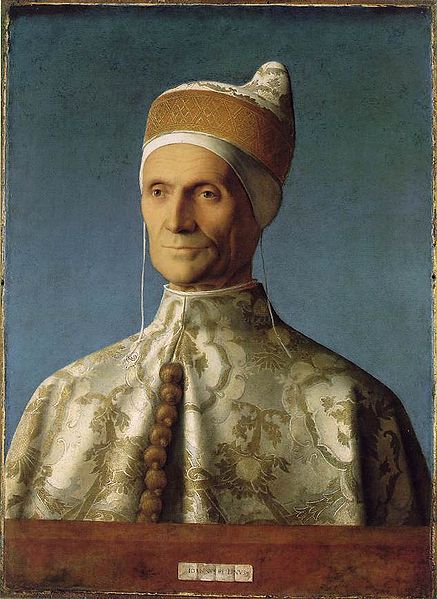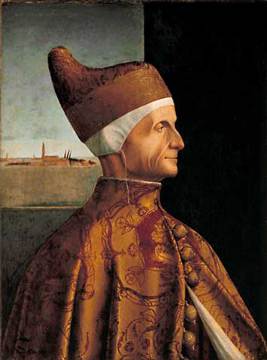<Back to Index>
- Philosopher Richard Nikolaus von Coudenhove - Kalergi, 1894
- Writer Guo Moruo, 1892
- Doge of the Republic of Venice Leonardo Loredano, 1436
PAGE SPONSOR


Leonardo Loredan (or Loredano) (November 16, 1436 – June 21, 1521) was the doge of the Republic of Venice from 1501 until his death, in the course of the War of the League of Cambrai. Upon the death of Pope Alexander VI in 1503, Venice occupied several territories in the northern Papal States. When Julius II was elected as Alexander's eventual successor, the Venetians expected their seizure of papal territory to be tacitly accepted, as Julius had been nicknamed Il Veneziano for his pro - Venetian sympathies. But instead the new Pope excommunicated the Republic and united the Papal States in an alliance with France, the Holy Roman Empire and several other Christian states.
The Doge's problems did not end in Europe. In 1509, the Battle of Diu took place, in India, where the Portuguese fleet defeated an Ottoman and Mameluk fleet, which had been transferred from the Mediterranean Sea to the Red Sea with Venetian help. The defeat marked the end of the profitable Spice trade, which was bought by Venetians from the Mameluks in Egypt and in turn monopolised its sale in Europe, reaping great revenues from it.
After losing to the league's forces at the Battle of Agnadello, Venice found her holdings in Italy shrinking exponentially. Soon Padua, Venice's most strategically vital Terra Firma holding, had fallen, and Venice herself was threatened. Loredan united the population, calling for sacrifice and total mobilisation. Padua was retaken, though Venice was still forced to accept a reluctant peace, following which it joined the Pope as only a junior ally in his new war against the French. When the Pope betrayed Venice once again, upon the verge of victory over France, Venice retaliated by aligning themselves with the French King Louis XII and were able to secure back all the territories they had lost. In addition, the Papacy was forced to repay many outstanding debts to the Loredan family totaling approximately 500,000 Ducats, an enormous sum of money.
Giovanni Bellini's portrait of Loredan is notable for being one of the first frontal portraits of a reigning doge; throughout the Middle Ages, mortal men had been portrayed in profile, while the frontal view had been reserved for more sacred subjects. Over two centuries later, when Pompeo Batoni was given a detailed programme for his large Triumph of Venice (1737) by the Odaleschi cardinal who commissioned it, Andrea was chosen to represent the office of Doge, standing amid a group of allegorical personifications.